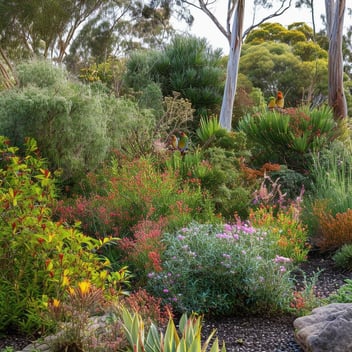The Best Soil Mix for Raised Garden Beds in Subtropical Climates
Introduction
Gardening in subtropical climates presents unique challenges and opportunities. The combination of high humidity, intense rainfall, and prolonged warm periods necessitates a tailored approach to soil composition, especially for raised garden beds. Crafting the ideal soil mix not only ensures robust plant growth but also enhances soil longevity and resilience against climatic adversities.
1. Understanding Subtropical Soil Challenges
-
High Rainfall and Drainage Issues: Subtropical regions often experience heavy downpours, leading to potential waterlogging. Ensuring adequate drainage in raised beds is paramount to prevent root rot and other moisture-related ailments.
-
Nutrient Leaching: Frequent rains can wash away essential nutrients from the soil, necessitating regular replenishment and the use of soil components that retain fertility.
2. Essential Components of an Ideal Soil Mix
-
Organic Matter: Incorporating well-aged compost enriches the soil with vital nutrients and improves its structure, promoting healthy root development. Compost also enhances water retention, crucial during dry spells.
-
Mineral Content: A balanced mineral composition, including elements like granite dust or azomite, provides trace nutrients that support plant health and vigor. These minerals contribute to the soil's physical properties, aiding in aeration and moisture regulation.
-
Aeration Materials: Incorporating components such as perlite or coarse sand enhances soil porosity, facilitating root respiration and efficient water drainage. This is particularly important in preventing soil compaction, which can impede root growth.
3. Crafting the Perfect Soil Recipe
-
Base Layer: Combine equal parts of high-quality topsoil and aged compost. This foundational mix offers a balance of nutrients and structure, setting the stage for healthy plant growth.
-
Aeration Enhancement: Integrate 10-20% perlite or coarse sand to the base mixture. This addition improves drainage and prevents the soil from becoming waterlogged, a common concern in subtropical climates.
-
Mineral Augmentation: Incorporate a modest amount of mineral-rich amendments, such as granite dust or azomite, to supply essential trace elements. These minerals support various plant functions, including enzyme activity and photosynthesis.
4. Importance of pH Balance
-
Optimal pH Range: Most vegetables and flowers flourish in soil with a pH between 6.0 and 7.0. Maintaining this pH range ensures nutrient availability and uptake by plants.
-
Adjusting Soil pH: Utilize lime to elevate pH levels in overly acidic soils or sulfur to reduce pH in alkaline conditions. Regular testing and adjustments help maintain an environment conducive to plant health.
5. Incorporating Organic Fertilizers
-
Nutrient-Rich Additives: Employ organic fertilizers such as worm castings, seaweed extract, or fish emulsion to bolster soil fertility. These natural amendments provide a slow-release source of nutrients, promoting sustained plant growth.
-
Application Frequency: Regularly amend the soil, especially after heavy rains, to replenish nutrients lost through leaching. Consistent fertilization schedules align with the rapid growth cycles typical in subtropical regions.
6. Mulching to Preserve Soil Integrity
-
Moisture Retention: Applying a layer of organic mulch, such as straw or shredded leaves, helps conserve soil moisture, reducing the need for frequent watering. Mulch acts as a protective barrier against evaporation, maintaining consistent soil hydration.
-
Temperature Regulation: Mulch insulates the soil, mitigating temperature fluctuations and protecting root systems from extreme conditions. This is particularly beneficial during periods of intense heat or unexpected cool spells.
7. Regular Soil Testing and Amendments
-
Monitoring Soil Health: Conduct soil tests biannually to assess nutrient levels and pH balance. Understanding the soil's current state informs targeted amendments, ensuring optimal growing conditions.
-
Tailored Amendments: Based on test results, adjust the soil composition by adding specific nutrients or organic matter to address deficiencies. This proactive approach maintains soil vitality and supports robust plant development.
Conclusion
Constructing the ideal soil mix for raised garden beds in subtropical climates is a dynamic process, requiring attention to organic content, mineral balance, and structural integrity. By embracing these principles, gardeners can cultivate resilient and bountiful gardens, harmonizing with the unique demands of their environment.




